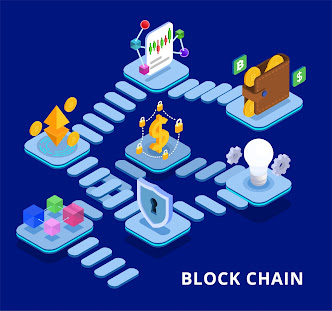What Are the Challenges of Blockchain Technology?
Blockchain is frequently viewed as a game changer in technology, promising a new kind of security and transparency. But it is not perfect and has significant problems, as is true of all technology. Let's set down the major challenges that blockchain confronts today in simple words.
 |
| Challenges Of Blockchain |
1. It struggles with scalability.
Blockchains can be slow. Every transaction must be confirmed by multiple computers on the network, which takes time. For example, Bitcoin can only handle roughly seven transactions per second. In comparison, Visa can process thousands of transactions each second. This makes it difficult for blockchain to keep up when a large number of people want to utilize it simultaneously.
What Could Help?
Some developers are working on “Layer 2” solutions like the Lightning Network. These tools help speed things up by processing transactions outside the main blockchain. But these solutions are still in the testing phase, so it’s not a complete fix just yet.
2. It Uses a Lot of Energy
One of the biggest knocks against blockchain is how much energy it uses, especially networks like Bitcoin that rely on a process called Proof of Work. This system requires computers to solve complex puzzles, which takes a lot of electricity. It’s bad for the environment and expensive.
A Possible Solution?
To cut down on energy use, some blockchains are moving to Proof of Stake. This method doesn’t need as much electricity, but it’s not perfect either. It can lead to other problems, like making the network more centralized, which takes away some of the benefits of blockchain.
3. The Regulation Headache.
Blockchain does not fit easily into existing rules, and governments are trying to determine how to control it. Different countries have different rules, which can be difficult for organizations looking to expand globally. There's also the issue of fraud—once a transaction occurs, it's unchangeable, which can be difficult when dealing with frauds.
What’s Being Done?
Governments are coming up with new regulations, especially around things like anti-money laundering (AML) and know-your-customer (KYC) rules. While these rules can help prevent crime, they also go against some of the core ideas of blockchain, like privacy and decentralization.
4. Privacy Issues Are Tricky
Blockchain is very transparent—anyone can see the transactions that happen on a public network. That’s great for accountability but not so great for privacy. Even though users are anonymous, it’s often possible to trace transactions back to them.
Privacy Solutions in the Works
Some blockchains are adding privacy features, like zk-SNARKs (a fancy way of hiding details) and ring signatures. These features make it harder to trace transactions, but they also make the blockchain more complicated and costly to use.
5. Blockchains Don’t Talk to Each Other
Most blockchains operate independently, which makes it hard for them to share information or assets. This lack of interoperability limits the usefulness of blockchain because, ideally, you’d want to move assets or data across different networks seamlessly.
Fixing Interoperability
Projects like Polkadot and Cosmos are working on solutions that allow blockchains to communicate. While these projects show potential, they’re still being developed, so we’re not there yet.
6. Security concerns exist.
While blockchain is usually secure, it is not perfect. Smart contracts, which are self-executing and written into code, can have errors. If hackers discover a vulnerability, they can use it to take funds. Several high-profile cyberattacks have exposed these issues.
Beefing Up Security
Developers are now investing more in security audits to catch bugs early. This improves security but also adds to the cost, making it harder for smaller projects to afford.
7. Not Everyone Gets Blockchain
Blockchain can be complicated, and not everyone understands how it works. This lack of understanding can make people hesitant to use it, slowing down adoption.
Spreading the Knowledge
More universities and online platforms are offering blockchain courses to help bridge the gap. However, it might take time before most people feel comfortable using blockchain in their daily lives.
8. It can be expensive to implement.
Using blockchain can be expensive. Costs, from initial setup to transaction fees, may pile up quickly, especially for small firms. These fees may prevent blockchain from becoming broadly accessible.
Making Blockchain Affordable
To help with this, some projects are working on reducing fees and providing free tools. While these efforts are helping, blockchain can still be a bit too expensive for some to adopt easily.
9. Congestion Can Slow Things Down
When too many people use a blockchain network, it can become congested. This leads to delays and higher fees, which is frustrating for users.
Techniques to Reduce Congestion
To combat congestion, developers are exploring solutions like sharding (breaking the blockchain into smaller parts) and sidechains (additional chains that support the main one). These solutions could speed things up, but they’re still being perfected.
Conclusion
Blockchain is exciting, but it has its challenges. From scalability and energy use to privacy and security, there’s a lot to work on before it becomes a mainstream tool. But with ongoing innovations and dedicated teams working on these issues, blockchain has a bright future ahead.








0 Comments
Any Doubts Feel Free And Drop A Comment!